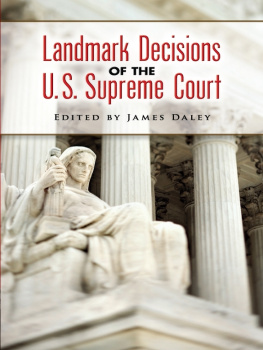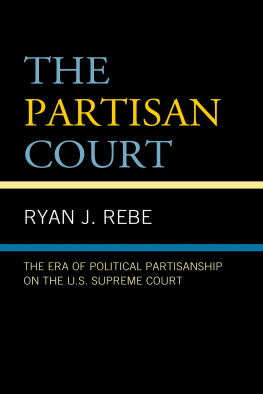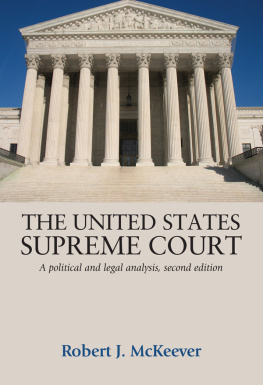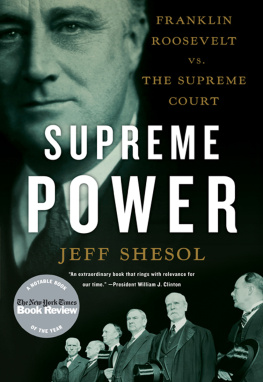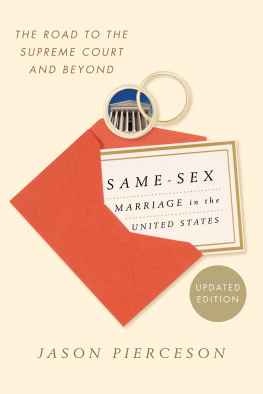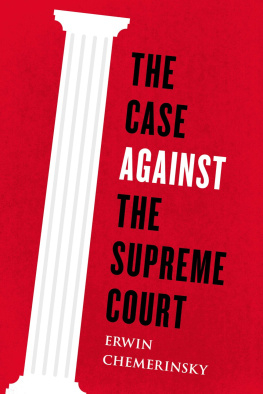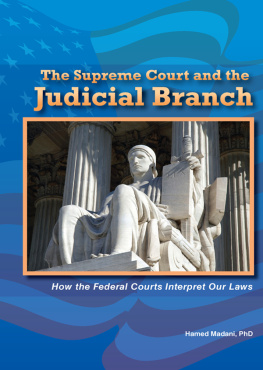James D. Zirin - Supremely partisan : how raw politics tips the scales in the United States Supreme Court
Here you can read online James D. Zirin - Supremely partisan : how raw politics tips the scales in the United States Supreme Court full text of the book (entire story) in english for free. Download pdf and epub, get meaning, cover and reviews about this ebook. year: 2016, publisher: Rowman & Littlefield Publishers, genre: Politics. Description of the work, (preface) as well as reviews are available. Best literature library LitArk.com created for fans of good reading and offers a wide selection of genres:
Romance novel
Science fiction
Adventure
Detective
Science
History
Home and family
Prose
Art
Politics
Computer
Non-fiction
Religion
Business
Children
Humor
Choose a favorite category and find really read worthwhile books. Enjoy immersion in the world of imagination, feel the emotions of the characters or learn something new for yourself, make an fascinating discovery.
- Book:Supremely partisan : how raw politics tips the scales in the United States Supreme Court
- Author:
- Publisher:Rowman & Littlefield Publishers
- Genre:
- Year:2016
- Rating:5 / 5
- Favourites:Add to favourites
- Your mark:
- 100
- 1
- 2
- 3
- 4
- 5
Supremely partisan : how raw politics tips the scales in the United States Supreme Court: summary, description and annotation
We offer to read an annotation, description, summary or preface (depends on what the author of the book "Supremely partisan : how raw politics tips the scales in the United States Supreme Court" wrote himself). If you haven't found the necessary information about the book — write in the comments, we will try to find it.
James D. Zirin: author's other books
Who wrote Supremely partisan : how raw politics tips the scales in the United States Supreme Court? Find out the surname, the name of the author of the book and a list of all author's works by series.
Supremely partisan : how raw politics tips the scales in the United States Supreme Court — read online for free the complete book (whole text) full work
Below is the text of the book, divided by pages. System saving the place of the last page read, allows you to conveniently read the book "Supremely partisan : how raw politics tips the scales in the United States Supreme Court" online for free, without having to search again every time where you left off. Put a bookmark, and you can go to the page where you finished reading at any time.
Font size:
Interval:
Bookmark:
Supremely Partisan
Supremely Partisan
How Raw Politics Tips the Scales in the United States Supreme Court
James D. Zirin
ROWMAN & LITTLEFIELD
Lanham Boulder New York London
Published by Rowman & Littlefield
A wholly owned subsidiary of
The Rowman & Littlefield Publishing Group, Inc.
4501 Forbes Boulevard, Suite 200, Lanham, Maryland 20706
https://rowman.com
Unit A, Whitacre Mews, 26-34 Stannary Street, London SE11 4AB,
United Kingdom
Distributed by NATIONAL BOOK NETWORK
Copyright 2016 by Rowman & Littlefield
All rights reserved. No part of this book may be reproduced in any form or by any electronic or mechanical means, including information storage and retrieval systems, without written permission from the publisher, except by a reviewer who may quote passages in a review.
British Library Cataloguing in Publication Information Available
Library of Congress Cataloging-in-Publication Data
Names: Zirin, James D., author.
Title: Supremely partisan : how raw politics tips the scales in the United States Supreme Court / James D. Zirin.
Description: Lanham, Maryland : Rowman & Littlefield, 2016. | Includes bibliographical references and index.
Identifiers: LCCN 2016016520 (print) | LCCN 2016016740 (ebook) | ISBN 9781442266360 (cloth : alk. paper) | ISBN 9781442266377 (electronic)
Subjects: LCSH: United States. Supreme Court. | Political questions and judicial powerUnited States. | Judicial reviewUnited States.
Classification: LCC KF8748 .Z57 2016 (print) | LCC KF8748 (ebook) | DDC 347.73/26dc23
LC record available at http://lccn.loc.gov/9781442266360
 TM The paper used in this publication meets the minimum requirements of American National Standard for Information Sciences Permanence of Paper for Printed Library Materials, ANSI/NISO Z39.48-1992.
TM The paper used in this publication meets the minimum requirements of American National Standard for Information Sciences Permanence of Paper for Printed Library Materials, ANSI/NISO Z39.48-1992.
Printed in the United States of America
To Marlene
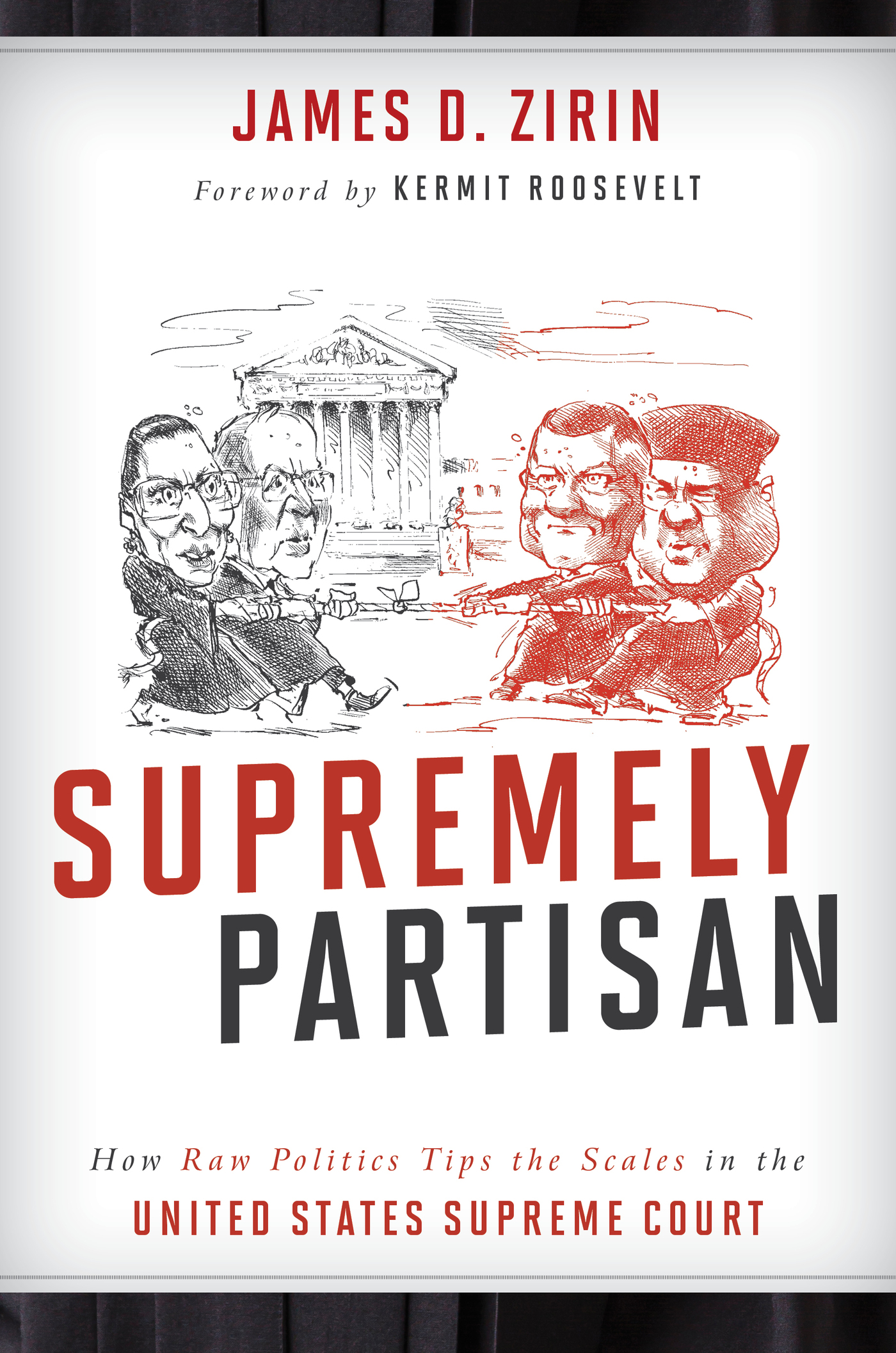
The United States Supreme Court has the last word on the meaning of the Constitution in our political system. In a real sense, the Constitution is what the Court says it is. But what the Court says has changed greatly over the years. In 1896, for instance, the Court announced in Plessy v. Ferguson that the separate but equal racial segregation of railroad cars was constitutionally acceptable, but in 1953, in Brown v. Board of Education, it rejected that doctrine. In 1986, in Bowers v. Hardwick, it held that the Constitution allowed states to criminalize same-sex sexual activity, but in 2003, Lawrence v. Texas reversed Bowers. Even at any given moment there are typically sharp divisions among the Justices on important questions of constitutional interpretation: of the decisions just listed, only Brown was unanimous.
How can these disagreements be explained? The simplest theory starts with the premise that the Constitution prescribes clearly correct answers in all cases. Some Justices faithfully adhere to those solutions and others seek instead to advance their own political agendas.
This was basically the position of Justice Antonin Scalia, and his aggressive advocacy in its favor has exerted an enormous influence on the publics perception of the Court and the Constitution. Unfortunately, that influence is largely negative because the position is wrong. It takes no more than a quick glance at the words of the Constitution to see that it does not, in fact, contain specific answers to every question that might arise. Instead, the Constitution frequently speaks in majestic generalities. Equal protection, due process, the freedom of speechthese are general concepts. The drafters of those words explained them in terms of broad notions of fundamental fairness and justified distinctions rather than arbitrary or oppressive discrimination. The ratifiers argued bitterly about which government acts would be forbidden and which allowed. It is not really possible to deny that on contentious constitutional questions there is some open space for argument, some indeterminacy, within which opposing positions are both legally plausible. So what determines the choices that Justices make?
One answer, also consistent with the Scalia model, is that when there is no answer, everyone acts like a politician. They advance the interests of their favored political party, or whatever policies they like, even when there is no constitutional basis for the choice.
Judges of course deny this. They claim to be umpires rather than players. As James D. Zirin puts it in this timely book, they fall all over themselves saying that when they decide constitutional cases, they are merely applying the law. But Mr. Zirin argues, to use the words of Justice Scalia, that this position is pure applesauce. When it comes to certain highly charged issues such as homosexuality, abortion, affirmative action, illegal immigration, capital punishment, and guns, he contends, the opinions of the Supreme Court reflect the views of the Justices arising out of personal life experiences, gender, religion, or political predisposition: in short, identity politics.
It is true, almost as a matter of logic, that if law or the Constitution do not take judges all the way to an answer, something else must be at work. And it is also true, I believe, that life experiences and predispositions are in large part the something else that enters judicial decision-making. But how exactly does that happen, and what are we to make of it? I believe the picture is a complicated one.
First, some Supreme Court decisionsperhaps most notably Bush v. Goreare hard to explain in any terms other than partisanship. Those decisions are justifiably condemned. But not all decisions, not even all of the controversial and divisive ones, are driven by partisan politics.
Instead, what determines a Justices position in many cases is better described as either a constitutional (not a political) ideology, or a general worldview. There have been divisive cases in recent years, for instance, about the scope of federal legislative power. The Justices clearly have commitments and preconceptions about this issue, but those commitments and preconceptions are part of their constitutional interpretation. Some Justices think that the Founding and the original Constitution struck a particular balance between state and federal authority and that the Court should try to preserve that. Others think that the Reconstruction Amendments, the Thirteenth, Fourteenth, and Fifteenth, forever altered that balance, so that the Founding conception is no longer part of our Constitution. That is ideology, maybe, but it is still rooted in an understanding of the Constitution.
Justices also differ on the question of how much they trust judgeshow willing they are to commit difficult choices to the judiciary rather than the political process. Justice Scalia had a very dim view of judicial capacity to settle hard moral questions; Justice Kennedy has much more confidence in it. Justices differ similarly on how much they trust the executive branch to take action in the name of national security without judicial oversight. Here, Justice Thomas is probably the most deferential. The liberals are less so, and Justice Scalia charted a compromise position, varying his trust depending on whether the action was directed at American citizens or not. Again, these are not narrow partisan differences. They reflect in part the Justices weighing of underlying valuesliberty vs. security, for exampleand in part their faith in the men and women who make up the different branches of our government. The Justices are not always consistent in these views from case to caseand when they are inconsistent, we might suspect that partisanship is presentbut to the extent that they are consistent, partisanship is not the driving force.
Next pageFont size:
Interval:
Bookmark:
Similar books «Supremely partisan : how raw politics tips the scales in the United States Supreme Court»
Look at similar books to Supremely partisan : how raw politics tips the scales in the United States Supreme Court. We have selected literature similar in name and meaning in the hope of providing readers with more options to find new, interesting, not yet read works.
Discussion, reviews of the book Supremely partisan : how raw politics tips the scales in the United States Supreme Court and just readers' own opinions. Leave your comments, write what you think about the work, its meaning or the main characters. Specify what exactly you liked and what you didn't like, and why you think so.



